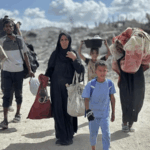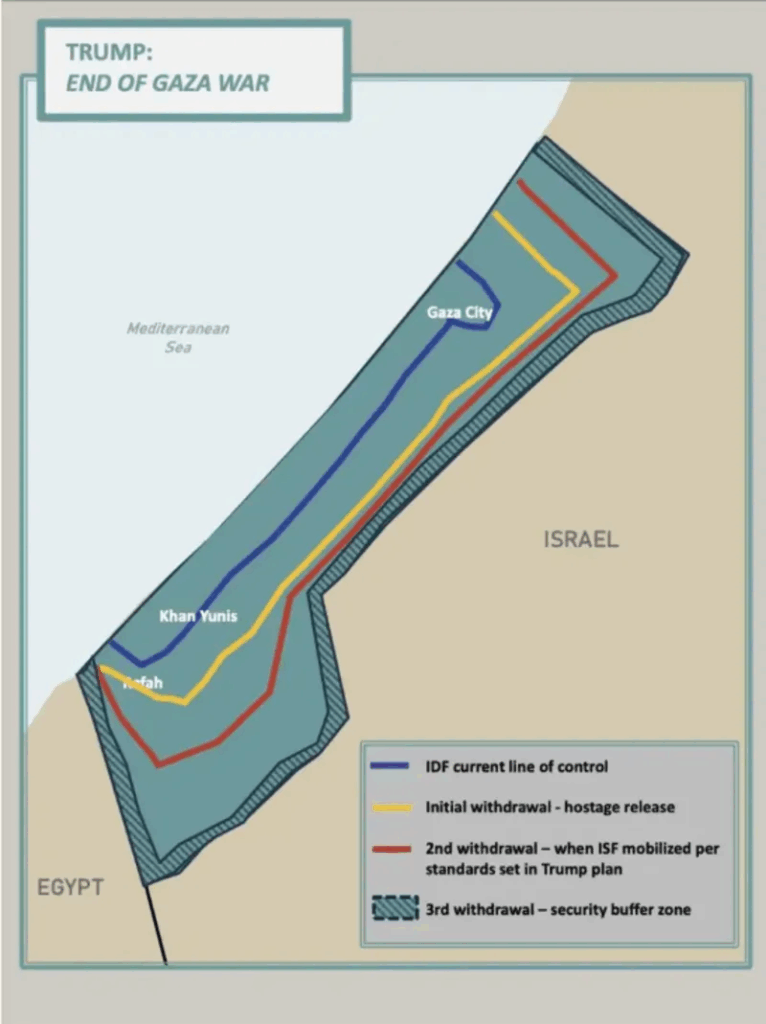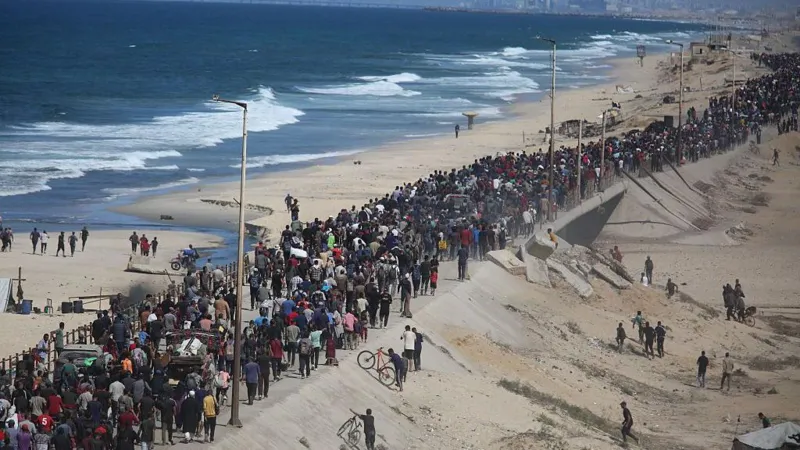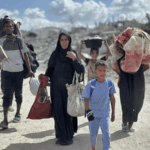
The Israeli military says it has partially withdrawn troops from parts of Gaza after a ceasefire agreement between Israel and Hamas came into effect on Friday morning.
Israeli forces said they had pulled back to an agreed position within the territory – though troops still occupy half of the Strip.
Footage shows thousands of Palestinians making their way to the north of Gaza, which has been heavily bombarded by Israeli forces in recent months.
The ceasefire came into effect after the Israeli government approved the first phase of US President Donald Trump’s ceasefire and hostage return deal on Thursday. The next phases are still being negotiated.
Under the deal, Hamas has until 12:00 local time (10:00 BST) on Monday to release all Israeli hostages – including 20 who are believed to be alive, and up to 28 hostages’ remains.
Israel should also release about 250 Palestinian prisoners serving life sentences in Israeli jails. Israeli army radio said 100 will be released into the West Bank and five to East Jerusalem. More are expected to be deported.
A further 1,700 Palestinians from Gaza who have been detained should also be released.
Under the terms of the deal, aid trucks should also be allowed unrestricted into the Strip to bring desperately needed aid to Gaza’s population – many of whom have been repeatedly displaced during the two-year war.
Around 600 aid trucks are expected to enter Gaza daily from Friday, though details of the rollout remain unclear and it has not yet been confirmed whether any increased aid has reached people since the ceasefire began.
A famine was declared in part of the territory for the first time in August by UN-backed experts, who said more than half a million people were facing “catastrophic” conditions characterised by “starvation, destitution and death”. Israel has repeatedly denied that there is starvation in the territory.
Eyewitnesses in Gaza said troops had pulled back from the north-western outskirts of Gaza City towards the east.
In the south, some Israeli troops were also reported to have pulled back from the Khan Younis area.
In a statement on social media, the Israel Defense Forces (IDF) said its troops “began positioning themselves along the updated deployment lines” from 12:00 local time.
“IDF troops in the Southern Command are deployed in the area and will continue to remove any immediate threat,” the statement added.
US special envoy Steve Witkoff said US Central Command had confirmed IDF troops had “completed the first phase withdrawal” to what he referred to as the “yellow line”. The line was featured in a map released by the White House last week marking where troops would withdraw to during this phase of the ceasefire agreement, where it will control 53% of Gaza.

“The 72-hour period to release the hostages has begun,” Witkoff added.
Israeli Prime Minister Benjamin Netanyahu said in a televised address he was “fulfilling” the promise to bring back all the hostages.
He added Israeli troops were still “surrounding Hamas from every direction”, adding the next stages of Trump’s plan are that “Hamas will be disarmed and Gaza will be demilitarised”. Hamas has not made any pledge to disarm at this point.
Earlier on Friday, there was some confusion around the timings of when the ceasefire was implemented. Eyewitnesses told the BBC air strikes continued in Gaza into the early hours of Friday.
The Hamas-run health ministry said 17 people had been killed in the past 24 hours.
The IDF said it would continue to operate from its updated deployment lines “to remove any immediate threat”, and urged people to avoid entering areas still under Israeli military control.
In areas of Gaza City where the IDF had withdrawn, Hamas security forces were deployed on the streets. They were pictured wearing caps with the logo of the Hamas Internal Security agency rather than a regular police force.
As troops partially withdrew, thousands of Palestinians were filmed travelling – many on foot – up Gaza’s coastal road to the north.
Many were travelling on foot for more than 20km (12 miles) carrying what remained of their belongings on their backs.
Along the damaged narrow roads, some waved Palestinian flags and flashed victory signs. But many also appeared weak and malnourished.

“The road is long and difficult, there’s no food or water,” said Alaa Saleh, a schoolteacher who fled Gaza City with his wife and six children to Khan Younis in the south.
“I left my family behind and started walking north. Thousands around me are struggling. Hiring a car costs around 4,000 shekels (£924; $1,227), far beyond what most people can afford,” he told the BBC.
Wael Al-Najjar, who was making his way to his home in Jabalia in the north, said he had slept outside on the cold pavement with his son waiting to be able to start his journey home.
He told a BBC freelancer: “Even if the house is destroyed, even if it’s just rubble, we’ll go back, put up a tent, and return to our people.”
Many on the road were aiming for Gaza City, much of which has been turned to rubble.
Videos circulating online show vast swathes of destruction in the city’s main neighbourhoods, including Sheikh Radwan in the north, and Sabra and Zeitoun to the south and east, where entire apartment blocks have been levelled.
Gaza’s civil defence crews have been recovering bodies from beneath the ruins, whileaid agencies have warned that essential supplies like food, fuel and clean water remain critically scarce.
In Israel, families of those held hostage in Gaza rejoiced at the news of the ceasefire.
Uri Goren, who has been campaigning since 7 October 2023 for the return of his cousin’s body after Tal Haimi was killed and taken by Hamas two years ago, said he allowed himself “a big sigh of relief” when he heard about the ceasefire agreement.
But his relief was tempered by Hamas’ admission that they don’t know the whereabouts of all of the dead hostages’ bodies. “This will not end until all 48 are back home,” he stressed.
Israel’s war on Gaza was triggered by the Hamas-led attacks on southern Israel on 7 October 2023, in which about 1,200 people were killed and 251 taken hostage.
Since then, more than 67,000 Palestinians have been killed, including more than 18,000 children, the Hamas-run health ministry says.
The UN commission of inquiry and leading experts have accused Israel of committing genocide against Palestinians in Gaza during the course of the war.
Israel has categorically rejected the report, denouncing it as “distorted and false”.
- President Commissions 36.5 Million Dollars Hospital In The Tain District
- You Will Not Go Free For Killing An Hard Working MP – Akufo-Addo To MP’s Killer
- I Will Lead You To Victory – Ato Forson Assures NDC Supporters
Visit Our Social Media for More




